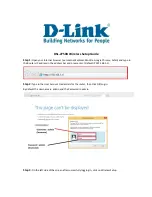
BT830 Hardware Integration Guide
Version 1.3
Embedded Wireless Solutions Support Center:
http://ews-support.lairdtech.com
www.lairdtech.com/bluetooth
34
Laird Technologies
Americas: +1-800-492-2320
Europe: +44-1628-858-940
Hong Kong: +852-2923-0610
FCC
AND
IC
R
EGULATORY
Model
US/FCC
CANADA/IC
BT830
SQGBT830
3147A-BT830
BT830
SQGBT830
3147A-BT830
DVK-BT830
SQGBT830
3147A-BT830
The BT830 family has been designed to operate with the antenna listed below having a maximum gain of 0.5 dBi. The
required antenna impedance is 50 ohms.
Item
Part Number
Mfg.
Type
Gain (dBi)
Connector
1
AT3216-B2R7HAA
ACX
Ceramic
0.5
N/A
2
S181FL-L-RMM-2450S
Nearson
Dipole
2.0
UFL
3
EBL2449A1-15UFL
Laird
PCB Dipole
2.0
UFL
4
MAF94190
Laird
Dipole
2.0
UFL
5
WRR2400-IP04-B (MAF94019)
Laird
Dipole
1.5
UFL
Documentation Requirements
In order to ensure regulatory compliance, when integrating the BT830 into a host device, it is necessary to meet the
documentation requirements set forth by the applicable regulatory agencies. The following sections (FCC, Industry
Canada, and European Union) outline the information that may be included in the user’s guide and external labels for
the host devices into which the BT830 is integrated.
FCC
Note: You must place “Contains FCC ID: SQG-BT830” on the host product in such a location that it can be seen
by an operator at the time of purchase.
User’s Guide Requirements
The BT830 complies with FCC Part 15 Rules for a Modular Approval. To leverage Laird’s grant, the conditions below
must be met for the host device into which the BT830 is integrated:
The transmitter module is not co-located with any other transmitter or antenna that is capable of simultaneous
operation.
As long as the conditions above are met, further transmitter testing is typically not required. However, the OEM
integrator is still responsible for testing its end-product for any additional compliance requirements required with this
module installed, such as (but not limited to) digital device emissions and PC peripheral requirements.
IMPORTANT:
In the event that the conditions above cannot be met (for example certain device configurations or
co-location with another transmitter), then the FCC authorization is no longer considered valid and the
FCC ID cannot be used on the final product. In these circumstances, the OEM integrator will be
responsible for re-evaluating the end product (including the transmitter) and obtaining a separate FCC
authorization.
When using Laird’s FCC grant for the BT830, the integrator must include specific information in the
user’s guide for the device into which the BT830 is integrated. The integrator must not provide







































